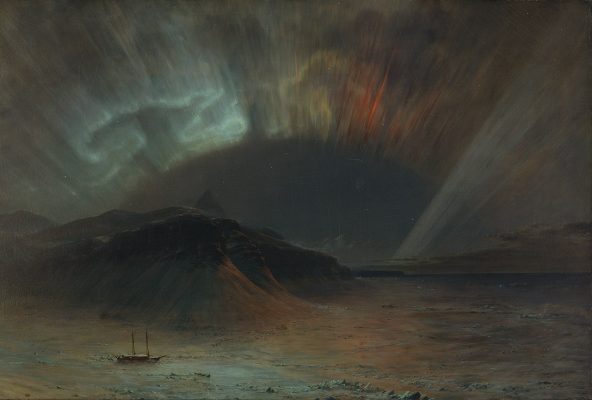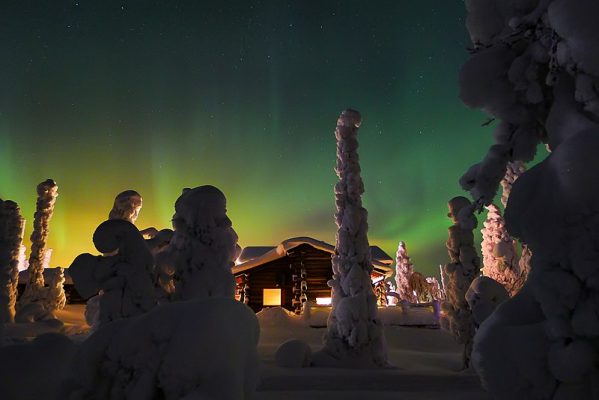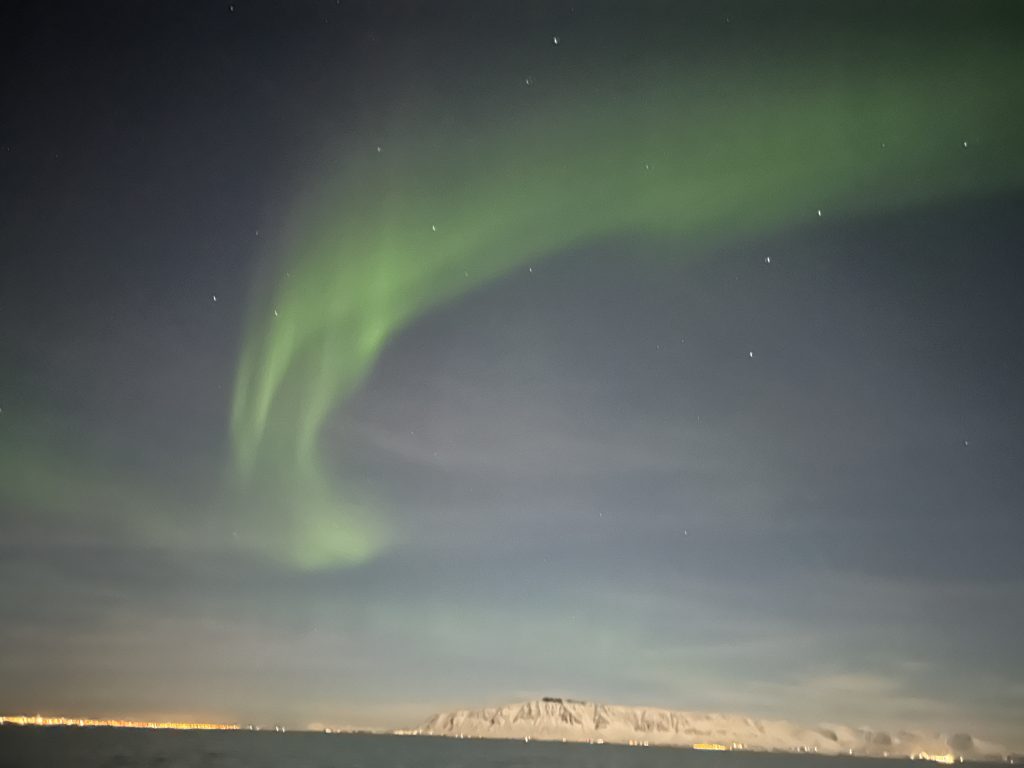The northern lights are truly a sight to behold. These otherworldly green ribbons regularly lighting up the skies of the arctic and subarctic have inspired awe for millennia. It is, then, little wonder that they top the list of the Seven Wonders of the Natural World. Today, we roughly understand the science behind them – including what causes them, and how to maximize our chances to see them. But throughout recorded history, auroras have inspired myth and legend in creative attempts to explain their causes and effects. Some people revered the lights, while others feared them. Some saw the lights as good omens, and others as harbingers of evil and despair. Here, we explore some of these myths and legends about northern lights.

Aurora Borealis by Frederic Edwin Church, an 1865 painting
The Sámi, the indigenous people Scandinavia, are among the cultures who had a healthy distrust of the northern lights. They believed that if northern lights came too close to Earth, they could swoop down and grab unsuspecting people – and so people hid from the lights, or tried to scare them off by clapping their hands loudly. But it was also discovered that whistling would draw the lights nearer. Sámi children would dare each other to whistle at the lights, until they came nearly close enough to grab them, and then scare them away again by clapping. So next time you’re out hunting the auroras, maybe give whistling a try!
Here in Iceland, few records of northern lights myths remain. One common belief was that northern lights could ease the pain of childbirth – however, if a pregnant woman were to gaze upon the auroras, her child would be born cross-eyed! Another belief was that auroras could be used to predict the weather – if the lights were dancing and waving in the sky, it meant a storm was coming, and people had to make preparations. Alternatively, if the lights were dancing, it meant a war was occurring somewhere in the world.
The Finnish word for northern lights – revontulet – translates directly into English as “fox fires.” This comes from an old legend of a magical Arctic fox – the “firefox” – who ran continuously across the tundra. Depending on the telling of the legend, the northern lights were caused by either its radiant fur, or the sparks that rose into the sky as it swept its tail across the landscape.

The aurora borealis lights up the sky around a cottage in Ruka, Finland
Meanwhile, Sweden was one of the places where northern lights were considered a good omen. A common belief was that the northern lights were reflections of lights off the scales of herring swimming far away in the sea – so if a fisherman saw the lights, a good catch was on the horizon.
In Denmark, legend spoke of swans who would hold competitions to see who could fly the farthest north. But swans who flew too far north might get their wings frozen. By flapping their wings, the ice crystals could be shaken loose, and reflect the sun’s light into the sky, causing the northern lights.
In Norse mythology, the northern lights were said to be reflections from the silver armour and spears of the Valkyries, the choosers of the slain. When a Viking warrior fell in battle, should he be worthy of the honour, he was escorted to Odin’s hall in Valhalla to feast with the Norse gods. The Valkyries were the female figures responsible for choosing these worthy warriors. So the night before an important battle, if a warrior looked up into the sky and witnessed the auroras, it meant the Valkyries were watching and ready to make their choices.
When watching the auroras dance on a clear night, behaving as they are breathing and have taken on a life of their own, it does not take a stretch of the imagination to see how many cultures saw them as manifestations of spirits or gods. Should you count yourself among the lucky ones to witness such a sight, then you can make your own conclusions. Come join us on one of our northern lights by boat tours – you might just witness the sight of a lifetime. (For tips on how to prepare for a northern lights hunt, click here!)
By Jonathan Rempel









